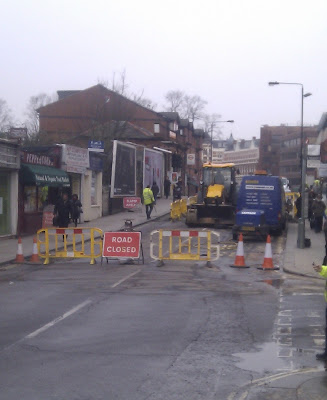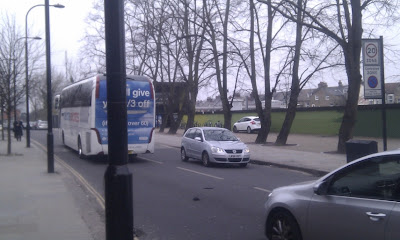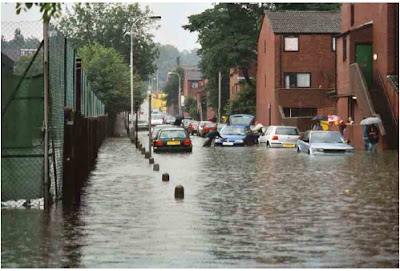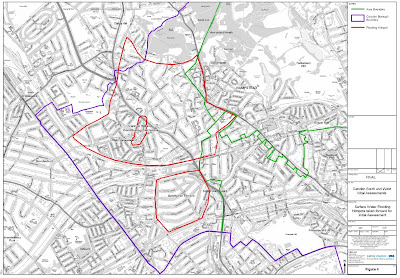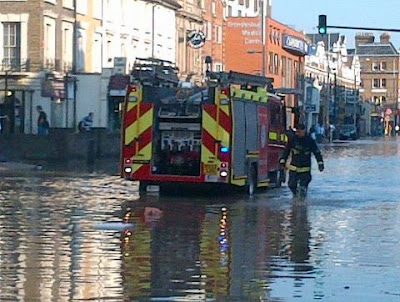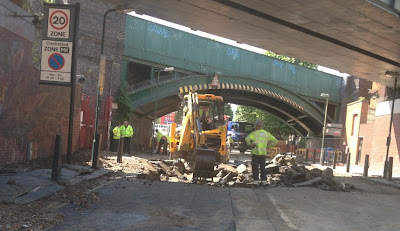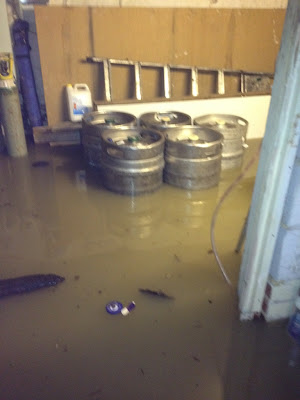Burst pipes, broken communication?
Burst water pipes. They happen. It’s annoying. You might lose water for the day, which – depending on your needs – is either slightly or extremely inconvenient but it’s a day, and you’ll cope.
If the water pipe is under a main road then that road will probably have to be closed and dug up and naturally that adds to the inconvenience. These are day-to-day occurrences for the public and privatised bodies that deal with our utilities. It’s easy to see that for them it’s just another job number. But they must also surely recognise that for the residents involved this is a fairly unusual and disruptive state of affairs. It is not too much to expect, therefore, for them to do everything they reasonably can to minimise that inconvenience. Overall I think we can say that in this latest incident on West End Lane, this has not happened.
Aside from the large pipe that burst, this past week has seen a spate of other burst pipes in the area. It looks like we’re in for some lengthy upgrade works, which means more disruption. Again, this happens. Stuff breaks and has to be fixed. You don’t get the Victorian architecture without some Victorian infrastructure that needs repairing.
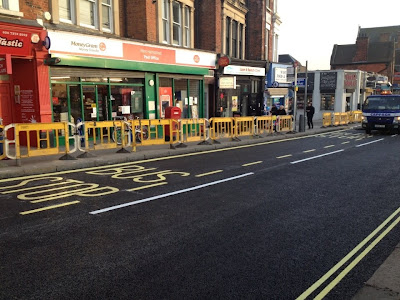 |
| Newly painted road markings (via @RentalFlatsNW6) |
The good news is that this latest batch of burst pipes should bump us a few places up the priority list for upgrade. The bad news is that although the original stretch of West End Lane should reopen today, the leak at Cleve Road is more complicated than it looks and this section of West End Lane may also need to be closed for a few days. Perhaps if that happens then we can learn the lessons from this past week’s somewhat farcical situation.
First, it’s still not clear why there was a gap of several hours last week between Thames Water turning up to examine the West End Lane leak and Camden closing the road so they could start work on it. On Twitter, Camden told me they were looking into this but I’m yet to hear any answers.
Second, although Thames Water repaired the leak reasonably quickly, fixing the road has taken an inordinate amount of time. I realise that they have to prioritise – which is why some leaks gets fixed immediately and others, which don’t cause loss of water supply or that risk damaging property, can take weeks. However, a busy main road that is on three bus routes is surely something of a priority? We were told on Wednesday that the road would be closed until Saturday, and that Camden then hoped to continue its own road resurfacing. Two days to fix a hole in the road – even a large hole – seemed reasonable. Problem was that not a lot happened on Friday. Then there was some activity on Saturday. But not a lot on Sunday. Today, Monday, it looks like it’s going to finally be fixed and reopen. But why did nothing happen on Friday and Sunday?
Do the budget cuts at Camden mean there’s no-one left to chase Thames Water? Do such things just fall through the cracks. Is there too much trust placed on the utility by the council? It’s true that Camden insisted that Thames make good the whole section of road in order to maintain the integrity of the road surface, which added time. But there was so much downtime on this job – or at least appeared to be – that they could have probably done the rest of the West End Lane while they were at it.
In the age of Twitter and the demand for greater transparency and information, these bodies need to up their game. Camden, Thames Water, and me(!) were being asked all day what was happening. Thames, which I think is generally ahead of the game in terms of using Twitter, was not hugely responsive; Camden presumably didn’t know – or at least the people manning the Twitter feed were too far removed from the people who knew the answers. I just felt like starting a “Is West End Lane open yet” websites that just showed a big “NO”.
What SHOULD happen is that people go to Thames Water’s neat interactive map that lets you check the status of reported leaks. Yet this simply isn’t up-to-date enough. People expect real-time information in 2013, and surely it’s not a major IT task to have status data uploaded from the senior person on-site into the database that underpins the map? Yet, if that’s supposed to happen, it does not. Right now the map says “We’re aware of a leak on West End Lane” – that’s the one they’ve already fixed. The Cleve Road leak doesn’t even get a mention.
Third, TfL dropped the ball. On Friday I bumped into a heavily pregnant woman on West End Lane at the corner with Broadhurst Gardens. She asked if I knew what bus to get to Kilburn. I had to tell her that her best option – short of a taxi – was to walk down Sherriff Road. TfL, generally fairly on the ball with dealing with closures, was saying on its bus countdown app that the buses were all running fine despite the fact that the road was impassable and all three buses – the 139, 328 and C11 – were on diversion. The full website has all the details, but surely there should be a trigger that can ensure the right information comes to our smartphones?
Sure, West Hampstead isn’t Oxford Street. Sure, residents had their water supply turned back on reasonably quickly. And sure, none of this stuff is the end of the world. But the knock-on effects are frustrating to say the least. This main leak has now taken six days to fix, and means another weekend of disruption as Camden will have to come back and do the original resurfacing work it had to cancel for this past weekend.
Everyone concerned can do better.





